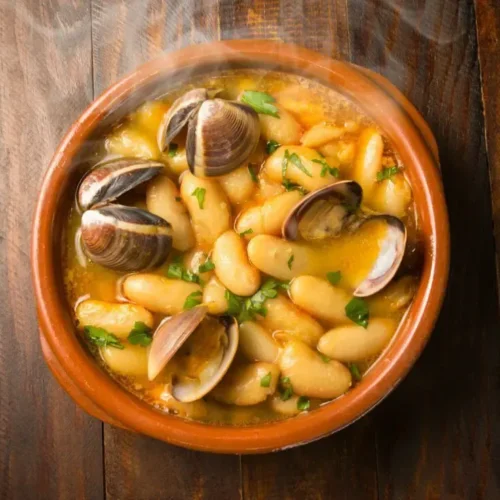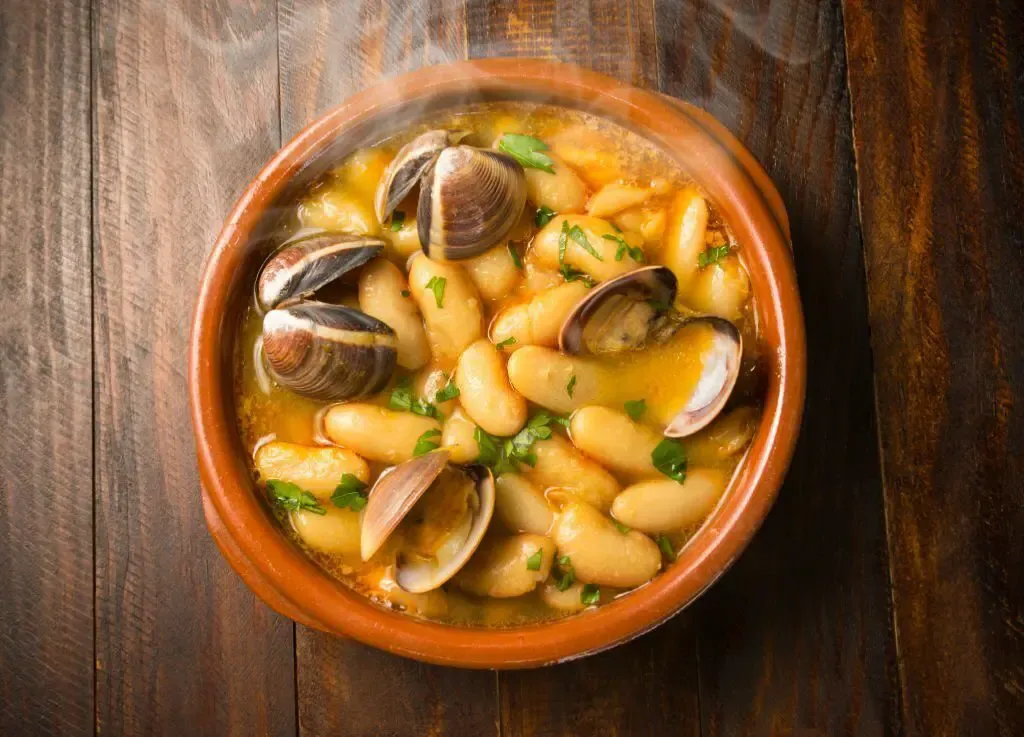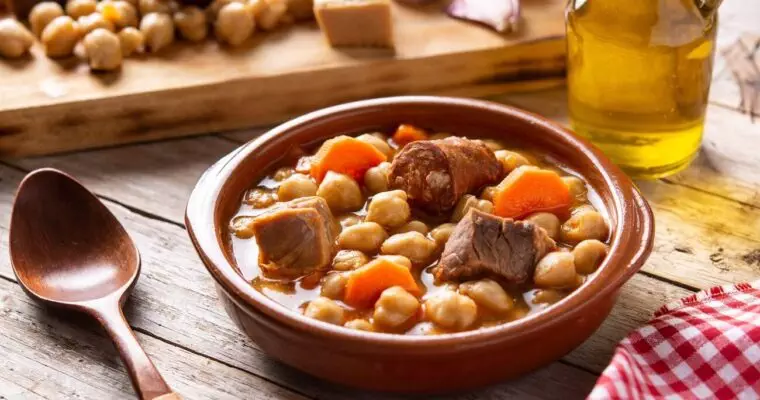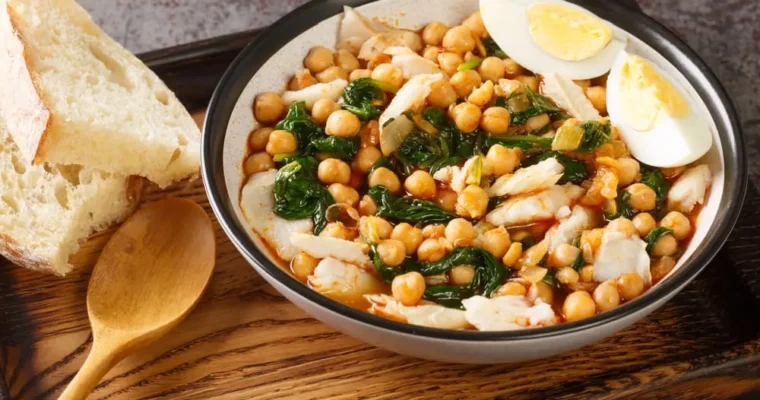The Essence of Asturian Cuisine
In the verdant valleys of Asturias, a culinary tradition was born, one that marries the robustness of the land with the freshness of the sea. Fabes con almejas, a dish steeped in history, is a testament to the region’s bountiful produce and its people’s ingenuity. It’s a dish that tells a story, a narrative woven from the fabes (the ivory-hued beans that are the cornerstone of Asturian gastronomy) and the clams, which add a whisper of the ocean’s mystery to the plate.
Fabes con almejas: A Dish with a Past
The origins of fabes con almejas are as humble as they are heartwarming. Initially, the fabada española (a hearty stew brimming with meats and sausages) was the staple. However, as the coastal breeze whispered through the Asturian countryside, it brought with it a desire for something lighter, something that spoke of the sea. Thus, alubias con almejas emerged, a dish where the huge clam took center stage, its robust flavor infusing the beans with a taste of the maritime.
Fabes con Almejas: The Symphony of Ingredients
Creating alubias con almejas is akin to conducting a symphony. Each ingredient must be chosen with care, and each step executed with precision. The fabes must be of the granja variety, known for their tender skins and creamy centers. The clams (preferably the almeja grande, or huge clam) should be fresh, their shells clattering like castanets as they await their turn in the pot.
Fabes con Almejas: The Art of Preparation
The preparation of alubias con almejas is an art form, a delicate balance of flavors and textures. Begin by soaking the fabes overnight, allowing them to swell with anticipation. Sauté onions and garlic until they’re translucent, then introduce the fabes, letting them simmer gently in a broth kissed with saffron’s golden hue. As the stew thickens, add the clams, their shells parting to reveal the tender flesh within.
Fabes con Almejas: Tips for the Perfect Dish
Here are some tips to elevate your dish:
- Soak the fabes for at least 12 hours to ensure even cooking.
- Use a heavy-bottomed pot to prevent the beans from sticking.
- Add the clams only in the last few minutes of cooking to keep them succulent.
- Serve with a sprig of fresh parsley for a burst of color and flavor.
Variations and Personal Touches to Master Fabes con Almejas
While the traditional stew is beloved, there’s room for creativity. Some chefs add a splash of cider, a nod to another Asturian treasure, while others infuse the dish with aromatic herbs like thyme or rosemary. The adventurous might even experiment with different types of clams, each lending its unique flavor profile to the dish.
The Final Flourish
To serve, ladle the fabes con almejas into a deep bowl, the broth shimmering like a jewel. Garnish with a lemon wedge, its zest is a bright counterpoint to the dish’s earthiness. And there you have it, a plate that is not just a meal, but a journey through the history and heart of Asturian cuisine.

Fabes con Almejas: How to Cook Them from the Heart of Asturias
Ingredients
- 1 lb Dried fabes or large white beans (450g)
- 2 lbs Clams (you can use a combination of small and large clams) (900g)
- 1 Onion, finely chopped
- 4 Cloves of garlic, minced
- ½ cup extra virgin olive oil (120ml)
- 1 Bay leaf
- 1 tsp Sweet paprika
- ½ cup Dry white wine
- Salt and pepper to taste
- Chopped fresh parsley for garnish
Instructions
- Prepare the Beans:Soak the dried fabes in cold water overnight. Drain and rinse the beans.
- Cook the Beans:In a large pot, cover the soaked beans with fresh water and bring to a boil.Reduce the heat to low and simmer until the beans are tender but still hold their shape. This can take 1 to 2 hours. Add more water if necessary.
- Prepare the Clams:While the beans are cooking, clean the clams by scrubbing them under cold running water to remove any sand or debris.Discard any clams that are open and do not close when tapped.
- Sauté Aromatics:In a large skillet or pan, heat the olive oil over medium heat.Add the chopped onion and sauté until translucent.Add the minced garlic and continue to sauté until fragrant.
- Combine Ingredients:Add the paprika and bay leaf to the onion and garlic mixture, stirring to combine.Pour in the white wine and let it simmer for a couple of minutes.
- Cook the Clams:Add the cleaned clams to the skillet, cover, and cook for about 5-7 minutes or until the clams open. Discard any clams that do not open.
- Combine Beans and Clams:Once the beans are cooked, drain them and add them to the skillet with the clams.Gently stir everything together and let it cook for a few more minutes until the flavors meld.
- Season and Serve:Season with salt and pepper to taste. Adjust the seasoning as needed.Garnish with chopped fresh parsley before serving.
- Serve Warm:Serve the fabes con almejas warm, either in the skillet or transferred to a serving dish.








